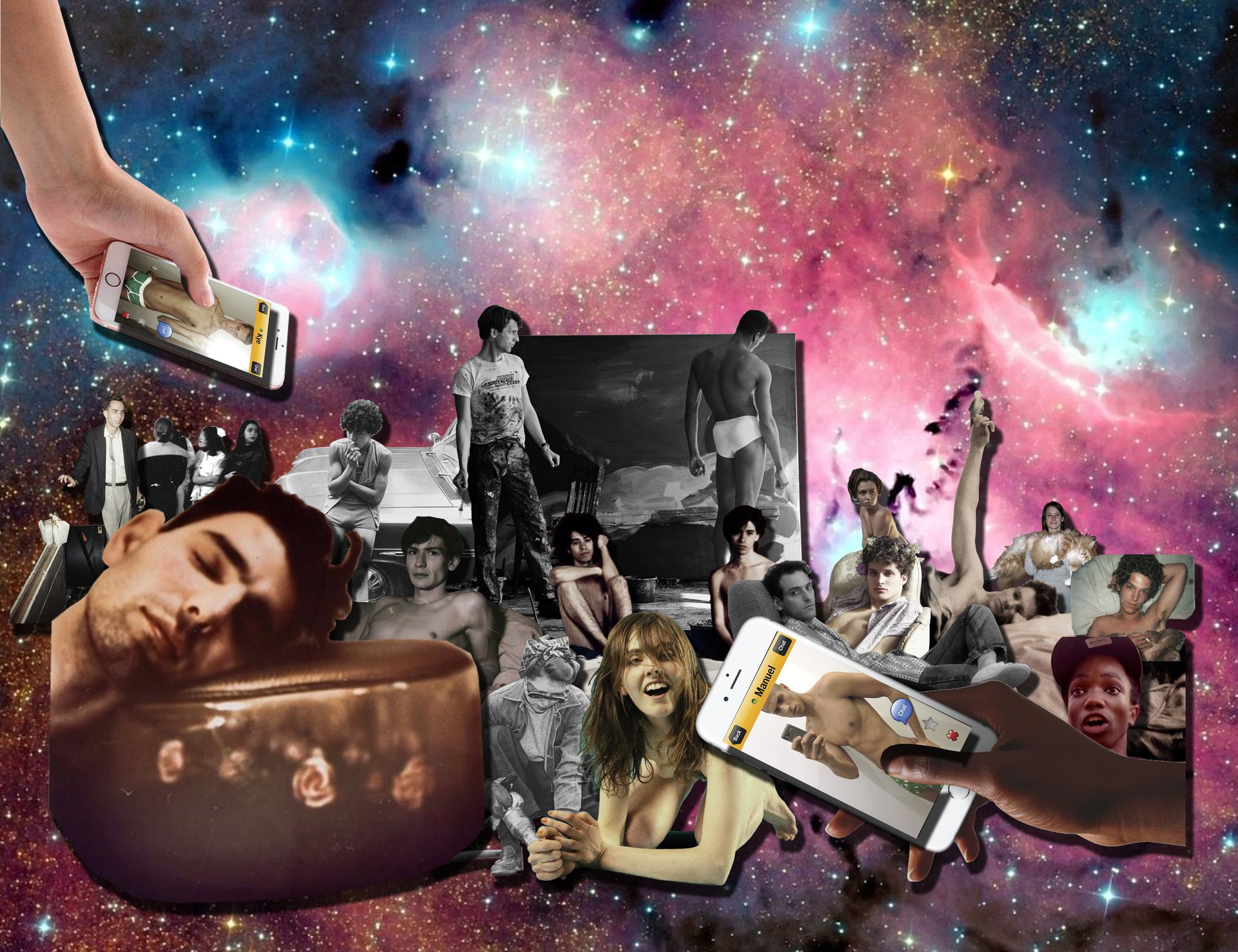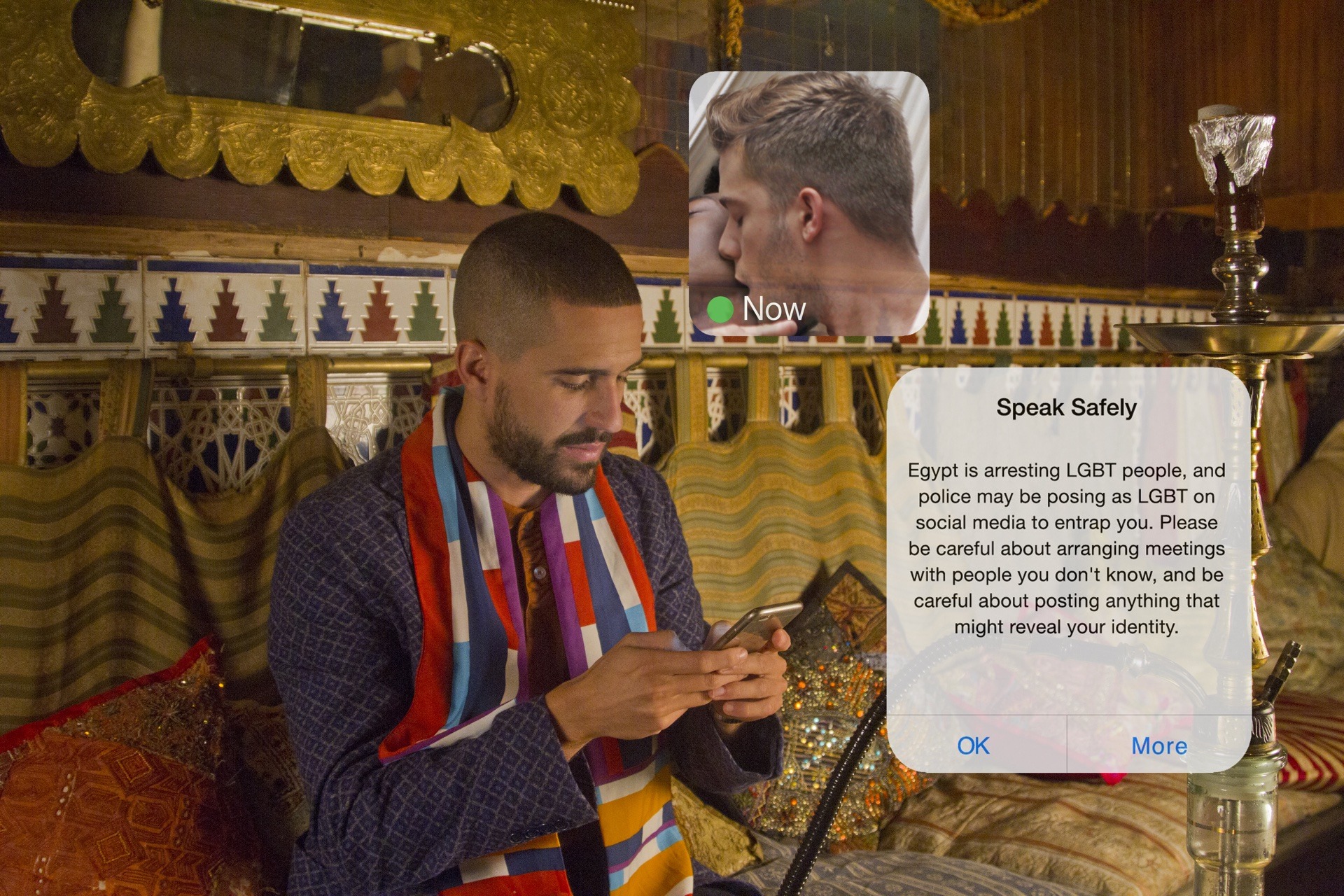About the project
Intimate Strangers is a multimedia installation, resulting from two years of fieldwork at Grindr’s headquarters in West Hollywood. The project was produced and first presented at the Design Museum of London.
Launched in 2009 by Nearby Buddy Finder, Grindr was the first gay-men-oriented Locative Geosocial Media. There are over one million active Grindr users at any time, yet 20% of the company’s servers are located in countries where gay sex is banned. The app has been seen as a space for LGBT emancipation, providing access to sex for a global population of gay men, of which no less than 11% remain closeted. A limited number of single-men profiles are available for users to check by dragging their fingers across sexy photographs behind the potassium-coated ion-strengthened glass of their smart phones. Grindr has helped to normalize gayness. It has become a place for gay celebrities to be seen, a location for streaming media from JW Anderson’s 2016 Summer menswear show, and a place for Paper Magazine to recruit models. Grindr has also been seen as a counter-queer space in the age of same-sex marriage. The app has been criticized for its contribution to transforming gay societies from being spaces of rough collective gender activism into becoming networks of confortable lifestyle consumption based on contexts of healthy-looking individuality and one-to-one intercourse.
Grindr is urban but it is not a city. It is not fixed to a piece of land but distributed in unstable constellations. Bodies, mirrors, cellphones, servers, satellites, clothes, skins, backgrounds, software, interfaces, etc. all participate in the making of a collective neural system, unapologetically jumping from one city to another, and into the countryside. Not just accommodated by the urban, Grindr has become a kind of urbanism in its own right. It is both super-immaterial and super-material. It is a network of constantly moving parts, linked by desire. The setting is permanently active, constantly being produced: by updating profiles, by dragging one profile to the next one, by disappearing from one person’s screen to become available on another’s. If Buckminster Fuller dreamt of a world of omnidirectional connectivity in the air, Grindr is the fulfillment of his vision. It is an urban enactment in which LGBT realities are made in online and offline realms, where proximity, intimacy, profiling, and the mathematics of sex are experienced and disputed. Urban tribes are defined and empowered, and racial or bodily features—no blacks, no fems, no fat—become reasons for rejection. Isolated gay men, living in countries where homosexual practices are banned and punished, gain access to an alternative space for interaction. Intolerant governments can also use Grindr to track, harass, and arrest gay men. But at a time when many western cities are being sanitized through gentrification, locative sex has become an urbanism in which emancipation, empowerment, connection, rejection, crime—love and fear—are brought together.
Credits
Videoinstallation first presented in London Design Museum as part of the exhibition Fear and Love. Reactions to a Complex World, 24 Nov. 2016-23 Apr. 2017
Andrés Jaque / Office for Political Innovation
Project Leaders
Andrés Jaque, Roberto González
Research
Paola Pardo-Castillo, Julie Klovstad, Michael Nathan, Andrés Villar
Design team
Laura Mora, Sebastian Kurth, Martín Noguerol, David Rodrigo
Audiovisual production and edition
Jorge López Conde, Eduardo López Rodríguez
Sound artist
Jorge López Conde
Text edition
John Wriedt







